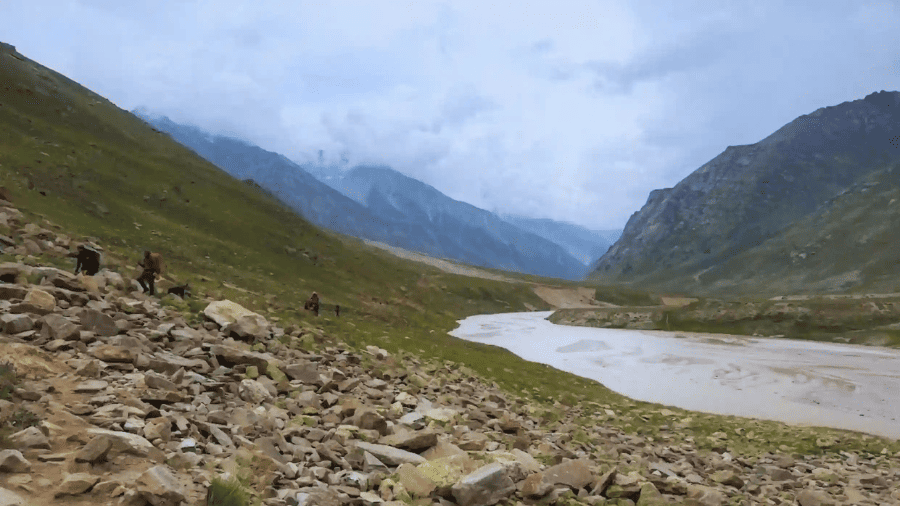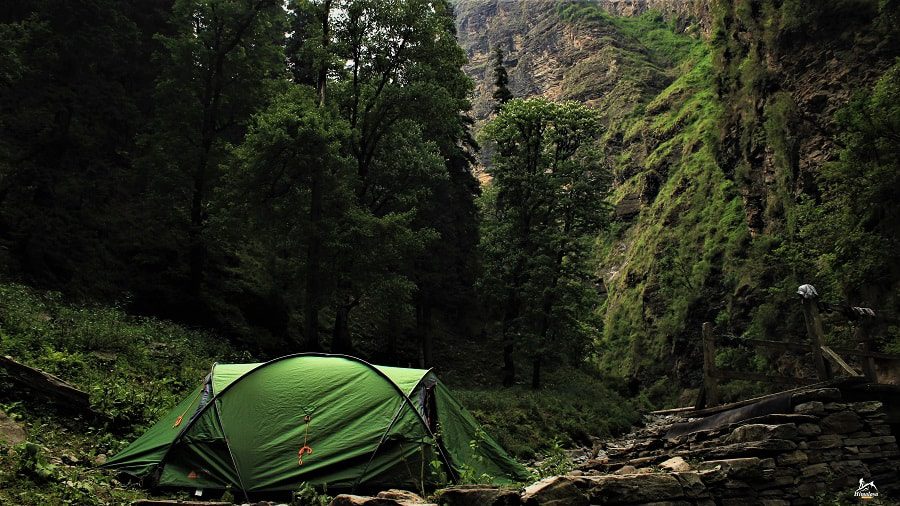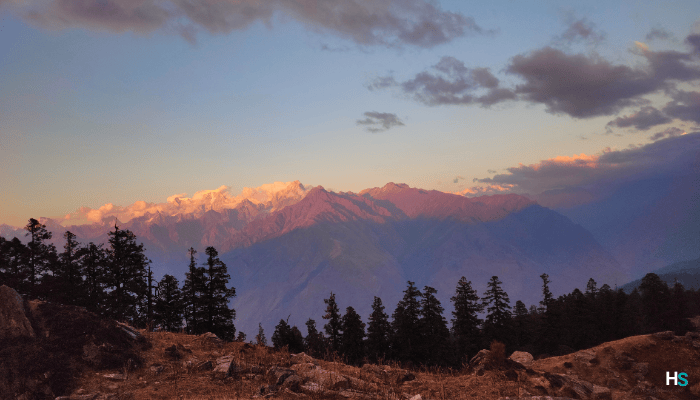
Things Beginners Should Know to Avoid Hiking Mistakes on a Himalayan Trek :
Trekking for the first time and have no idea what to do or not to do? Relax, as you are exactly where you are supposed to be. This article will guide you through everything you need to know about all the mistakes one should avoid for a successful trek.
To avoid hiking mistakes, here are a few things you need to do:-
Why Is It Important to Take Care About?
Trekking as a beginner can be the greatest experience of your life, but it can turn into a nightmare if you don’t plan it properly. So, buckle up, my friend, as we are about to tell you things to take care of including mistakes you must avoid on your first hiking trek.
1. Google the location:
As boring as it sounds, research is the most important part of your preparation. Pick up your phone and Google the Trek. Read the articles, Reddit forums, quora, and trekking communities, and watch the videos to get a rough idea about the location and terrain. Understand the weather, location, area, and the kind of path you will be walking on. All this information will help you prepare yourself for the journey.
2. Backpacking:
Now, when you have enough information about the trek, it’s time to select the right gear for your journey.

The most common mistake beginner hikers make is overpacking. Remember, it is really important to travel light, and you can keep only necessary things in your backpack. Let me help you with the basic items you need for your trek.
- A good backpack: You cannot carry any random bag on your trek. You need a good-quality traveling backpack that can contain all your necessary items for the trek. There are specific bags that are specifically made for hiking. These backpacks are waterproof and have a lot of pockets to keep all your belongings systematically.
- Pack systematically: Don’t pack your things randomly in your backpack, as you cannot keep unpacking your entire stuff just for one thing. Keep your clothes and other items sequentially so that you can easily take out things without disturbing the other items. Read this blog to understand more about “how to pack items in a backpack systematically“.
- A poncho: Don’t even think about carrying an umbrella or a normal raincoat, as they won’t protect you during heavy rainfall. Invest in a good and affordable poncho, as it will keep you dry and protect you from strong cold wind.
- Dry fruits: They are a great supplement for your trek as they taste good and provide you with all the necessary nutrients your body requires. They are small in size and can be stored for a long time. So, pack a good amount of dry fruits in your backpack.
- Toffees: I know, I know, you are not a kid, and you don’t need candies. But hear me out, you may not be able to drink water again and again on longer routes, and hence, toffee is the best way to keep your throat wet during the hike.
Apart from this, having a toffee in your mouth will make you breathe through your nose and not your mouth. It will ultimately increase your endurance, as breathing through your mouth can tire you easily. - Easy to dry and breathable clothes: You are going on a trek, and as tempting as it sounds, avoid packing your stylish clothes. Pack only a few sets of comfortable clothes that are made up of easy-to-dry and breathable material.
Breathable clothes are comfortable as they dry quickly and keep you cool during the warm period of the day. Moreover, you can wash them in the evening and wear them again in the next morning. Get yourself at least 2-3 sets of clothes and this number can vary according to the duration of your respective trek. - Trekking shoes: Do not compromise on your shoes. They are the most important part of your trekking gear, as they will support and protect your feet. Buy good-quality shoes for your trek, as the cheap ones might tear or break in the middle of the trek. Apart from this, wear the right size of shoes. The wrong-sized shoes will hurt your feet and cause blisters.
One of the most common mistakes beginners make is not breaking into their new shoes. You don’t have to save your brand-new shoes solely for the trek. Wear them a lot before going to trek so that you become comfortable wearing them. - Practice taking long walks in those shoes so that you adjust them according to your feet. You can also carry a heavy bag with you to prepare yourself for the trek.
- Socks: Keep at least 4 to 5 sets of socks, as you will need to change them often. Also keep a small bottle of talcum powder to avoid excess moisture in your feet, as it might result in fungal infections.
- Medicines and first aid kit: You will be trekking in the wild, and hence, you must prepare yourself for all the adverse conditions. Pack all the necessary medicines along with a small first aid kit, as it will come in handy during the hike.
- Slippers and sunscreen: You cannot wear your trekking shoes for small trips to the bathroom, kitchen, or to roam around your camp. So, carry a set of slippers with you.
Pack a good sunscreen, as you might get a lot of tan and sunburn on higher altitudes. Keep reapplying it every two hours during sunny days.
Now, when we are done with your packing, let’s discuss the other details you might need to know about trekking:
3. Elevation affects your physical health:
A lot of beginner hikers do not know that elevation decreases your physical strength. The higher you move, the less oxygen your body gets. AMS (Acute Mountain Sickness) or mountain sickness is a condition that occurs if you climb to higher elevations too fast. It does not matter if you are a beginner or an experienced hiker; everyone experiences a little problem in the low oxygen zones.
It will get difficult for you to breathe, and you may experience dizziness, headaches, appetite loss, brain fog (difficulty to think), and more.
To avoid this issue, you need to give your body some time to adjust according to the oxygen levels. We call this phenomenon acclimatization. In this process, we climb to mountains slowly, giving our bodies enough break in between to adjust according to the environment.
You are here to enjoy the trek and not complete it as soon as possible. So, take your time to adjust yourself, and don’t overexert yourself.
4. Be Updated on Weather Forecasts:

Hope for the best, but prepare for the worst.
You should check the weather before starting your trek, but you cannot completely rely on it. Hence, it is really important for you to prepare all the necessary materials. Keep an extra set of clothes that can dry easily and be worn again and again. Buy a poncho instead of a raincoat, keep a small pocket knife, enough water and snacks, a map, and a small first aid kit with all the necessary medicines.
Layer your clothes instead of wearing one or two thick jackets. The weather can get really cold and really hot during the trek. So, you cannot keep wearing and removing your jacket again and again, as you will get sick. Hence, layer yourself with thin but warm clothes that can be removed and worn without exposing you a lot.
5. Take a proper diet:
Yes, you are on vacation, but you cannot eat anything you want. You must avoid eating heavy and difficult-to-digest food during the trek, as it will make you feel heavy and nauseous. Eat light and nutritious food to support your body throughout the trek. Moreover, try to avoid fancy places and eat at places where most locals eat.
6. Take proper sleep:
Bonfires are fun but try not to stay up all night as you will be tired the next day. Trekking makes you overexert your physical limits, which results in muscle soreness and fatigue. This is why you need to give yourself a good night’s rest to properly enjoy your trek.
7. Stay with the group:
It’s an amazing experience to interact with different people coming from different cultural backgrounds. Moreover, it is necessary for you to stay with the group so that you won’t be lost and always have support during the trip.
8. Avoid alcohol and cigarettes:
There’s a misconception that alcohol warms up your body in the cold temperature. In reality, it will only dehydrate you and make your trekking experience worse. Try avoiding consuming both alcohol and cigarettes during the trek for a better experience.
9. Avoid littering:
Don’t throw your plastic bags or other items in the wild, as no one is going there to clean up your mess. Remember not to leave a trail behind you with your trash.
10. Don’t feed wild animals.
They are not your pets, and you are just harming them by feeding them. It will make them rely on humans for food. They are wild animals, and they need to rely on themselves for their survival, and feeding them will hinder their natural process.
11. Befriend the locals:
When you are visiting a place, you are entering into their territory; hence, it is really important to respect their customs and culture. When you visit a new place, try to indulge with the locals, as they will be a great help to you at times of need.
Trekking is an amazing way to reconnect with yourself and take a break from the hustle and bustle of life. But, you must remember not to make these hiking mistakes when you go to the Himalayas. With proper planning, this trek will become the once in a lifetime experience for you.
Contact Details:
Himalaya Shelter organizes customized trekking programs for Winter treks, Summer treks, Monsoon treks, High mountain passes treks, Glacier treks, Cultural Exploration treks, and many others. With Himalaya Shelter, you can expect to get the best trekking experience by trekking with trained trek leaders, getting excellent quality equipment, and enjoying delicious meals while savouring the beauty of Mother Nature. For more details Contact Us on…
Contact No: +91 9458386006
Email ID: info@himalayashelter.com
In Himalaya Shelter, we provide you with the option to customize your trekking experience. Whether you’re a solo traveller, a group of friends, or a family, you can opt for our personalized tailor-made trekking program. This customized trek will be exclusively designed for you, taking into account your specific requirements for transportation, accommodation, meals, and any other premium facilities you may need during the trek. No other participants will be added to your group. Choosing a customized trek will enable you to fully enjoy the trek with your loved ones.
About Author

Himalaya Shelter
Recent news

23 Dec 2025

20 Dec 2025

18 Dec 2025

16 Dec 2025

10 Dec 2025